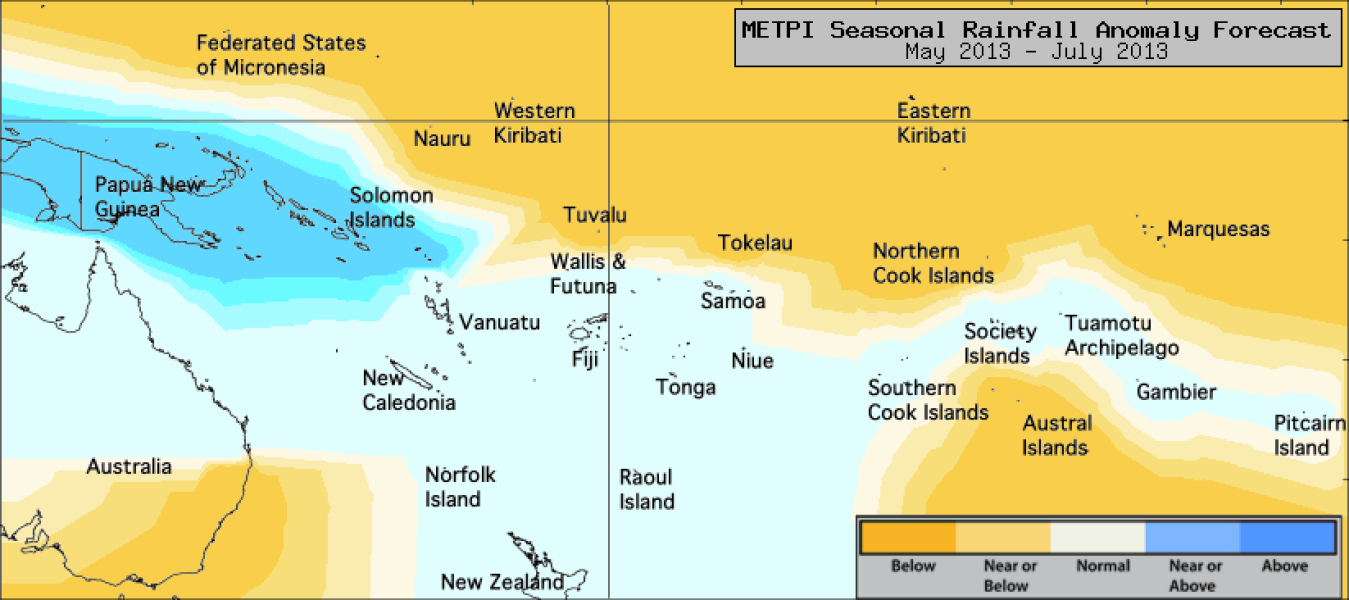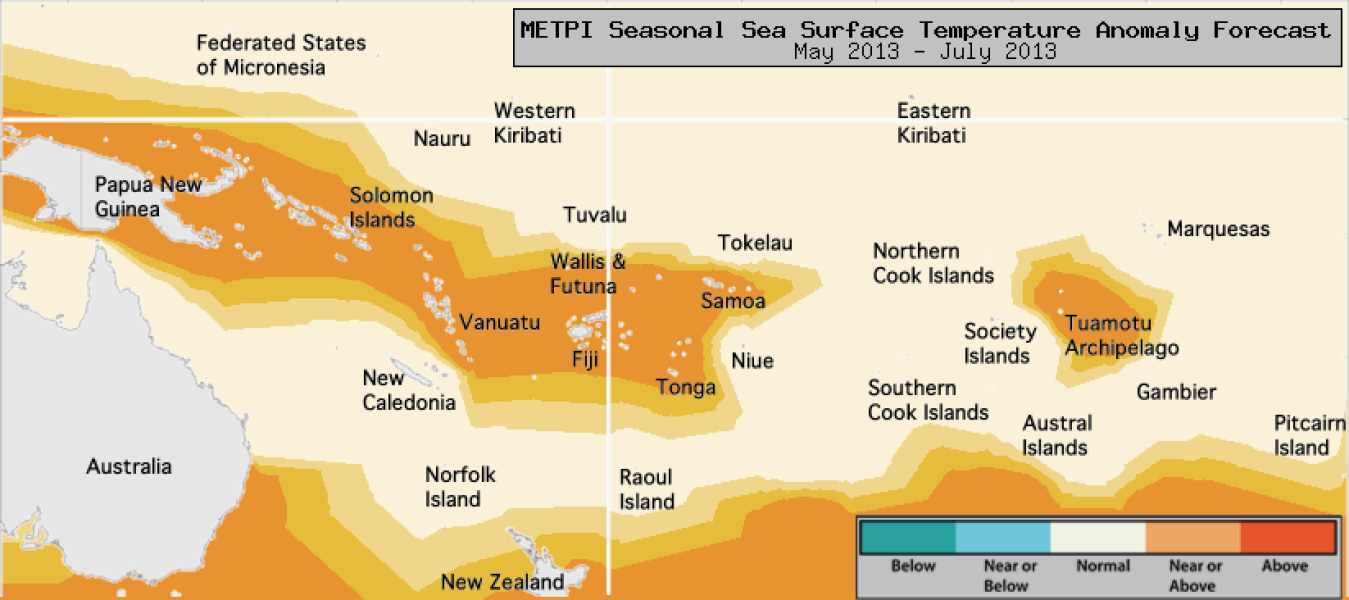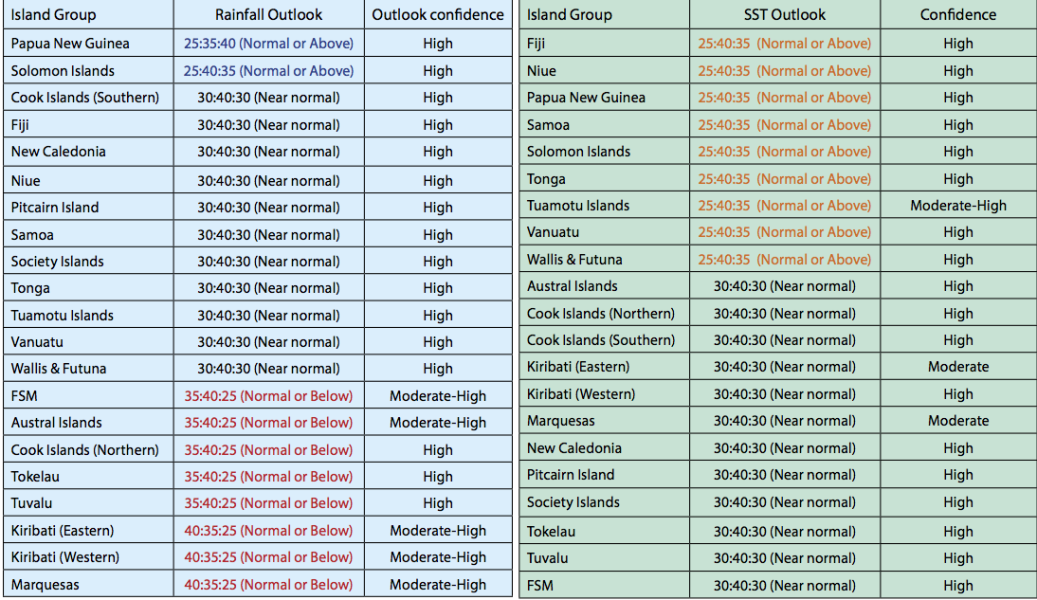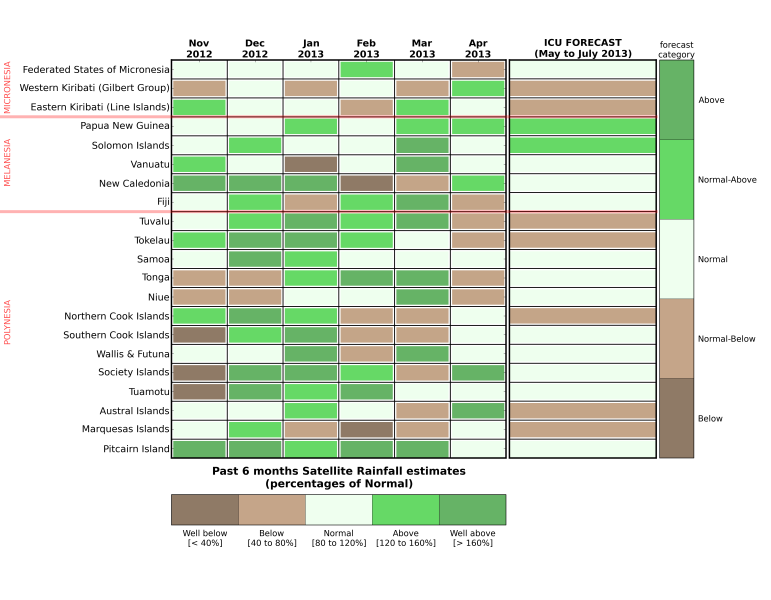The dynamical models indicate that the SPCZ will be situated slightly south of its climatological position during May – July 2013.
Near or above normal rainfall is forecast for Papua New Guinea and the Solomon Islands.
Normal or below normal rainfall is forecast for the Federated States of Micronesia, the Austral Islands, the Northern Cook Islands, Tokelau, Tuvalu, Eastern Kiribati, Western Kiribati and the Marquesas.
Near normal rainfall is expected for the Southern Cook Islands, Fiji, New Caledonia, Niue, Pitcairn Island, Samoa, the Society Islands, Tonga, the Tuamotu archipelago, Vanuatu and Wallis & Futuna.
The global model ensemble shows weak SST signals heading toward austral winter. Some warm anomalies in the western Pacific region and for areas that were warmer–than–normal in previous months are expected to persist.
Equatorial SST anomalies are currently weak, and an ENSO signal is not evident in the NINO3.4 region.
Near normal or above normal SSTs are forecast for Fiji, Niue, Papua New Guinea, Samoa, the Solomon Islands, Tonga, the Tuamotu Islands, Vanuatu and Walllis & Futuna.
Normal sea surface temperatures are expected elsewhere.
The confidence for the rainfall outlook is moderate to high. The average region–wide hit rate for rainfall forecasts issued in May is 56 %, six points lower than the long–term average for all months combined.
The SST forecast confidence is high across the region except for Eastern Kiribati and the Marquesas, where uncertainty is greater.
The figure on the bottom right presents the last six months rainfall anomalies for each Island group alongside the latest ICU rainfall forecast for the May-July 2013 period.
The past 6 months rainfall anomalies are based on the near-real-time TRMM (Tropical Rainfall Measurement Mission) merged satellite product available from http://trmm.gsfc.nasa.gov. The data has been downloaded from the ftp server at URL ftp://disc2.nascom.nasa.gov/data/TRMM/Gridded/Derived_Products/3B42RT/Daily For each Island group, the monthly value is derived from the average of all grid-points (or "pixels") in the TRMM Dataset that intersect a coastline, to ensure that the values correspond as closely as possible to rainfall on land, and excluding rainfall falling on ocean surfaces.
The climatology used has been established over the 1998 – 2012 period. The categories ("Well-below", "Below", etc) are determined according to the percentage of the normal rainfall for that month. The thresholds are indicated in the colorbar at the bottom: to give an example, "Well-below" normal rainfall means the rainfall for that month was under 40 % of the normal rainfall, "Below" normal rainfall means that between 40 and 80 % of normal rainfall was received, etc.
IMPORTANT NOTE:
Please note that, while we use the same color-scheme for the past rainfall anomalies and the ICU forecast, the type of information presented is different. In the case of the past 6 months, actual rainfall has been estimated by satellite, and the categories are well-defined by monthly estimated rainfall compared to the long-term mean. The ICU forecast, on the other hand, is probabilistic: it indicates the likelihood (percentage chance) of rainfall being at, above, or below normal for the season as a whole. When the percentage chances in two categories are close to each other, we indicate both categories: for example if the forecast is for 35 % chance of receiving below rainfall, and 40 % chance of normal rainfall, the outcome is "Normal or below".




